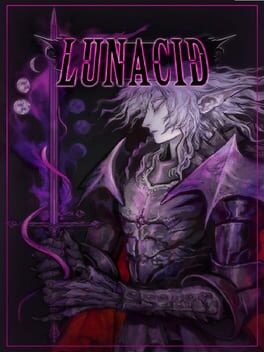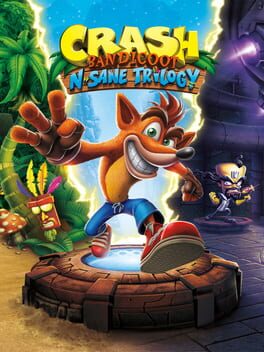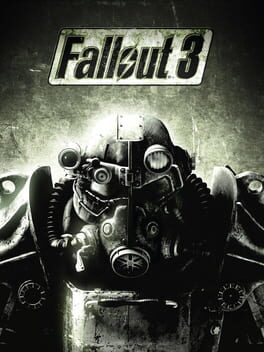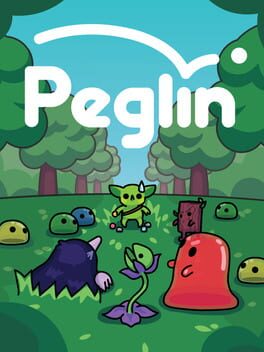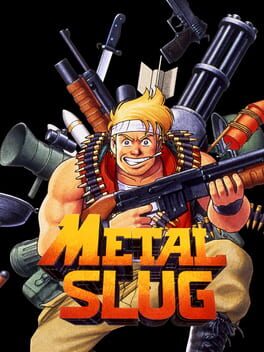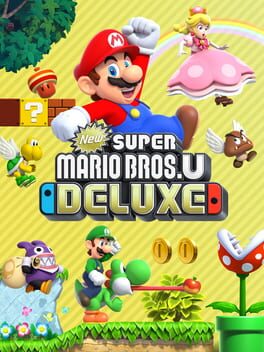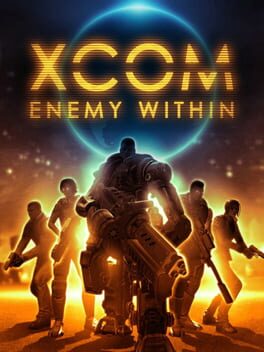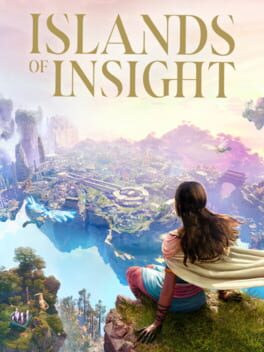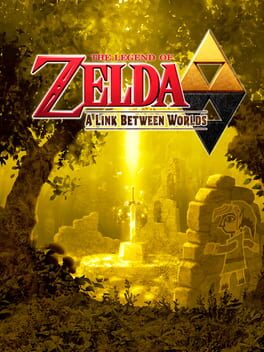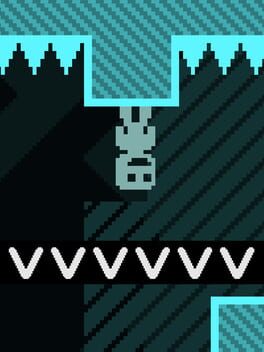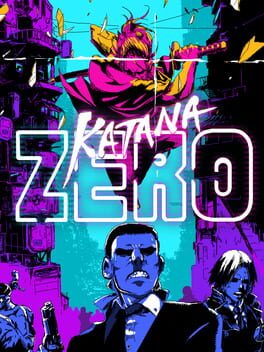skylean
BACKER
2022
Oof. This is a tough score to give. I really really really tried (and managed to, at least for a while) to enjoy the game. Progression is fun and the ps1 era vibes is also great (Could be better, the realistic fire on the torch, to cite on example, feels very uncanny), but the game has LOTS of problems from that era.
Clunky is the definition of the game. The game started with me killing every enemy twice because i didnt knew how to open a locked door, The requirement to unlock it was always very clear, a key that costed 1C from the merchant, but I had zero even after killing everything twice and also breaking every pot near the pit. I then thought "Okay, makes sense that snails don't give any money but there is no way I have to grind" and I did and that was the first problem I had playing Lunacid. It is terrible game design to lock progression behind a random drop that you haven't even told the player that it's obtainable! That's ridiculous and it was so simply solvable by having one single snail have a guaranteed drop... I then googled how the hell to get coins and then grinded for a bit to proceed.
All maps are labyrintic and the lack of variety within the same area + the lack of an actual map makes most areas a hell to navigate, and this is exactly what made me drop the game. It's unnaceptable for me the fact that a game focused on discovery/exploration is so unpleasant to explore like this. But it got way worse when the game makes an area terrible to navigate on purpose and punishes you if you stay there for too long. After loosing some hours of progress because of that, I can't see myself picking up the game again.
The combat is nothing spectacular, but it's fun most times, besides the fact that some enemies take too many hits to die and at the same time did almost no damage at all to me, like the first and only boss fight i faced.
The soundtrack is very hit or miss, while sometimes it gave me chills other times the songs feels very out of place, destroying the ambiance. Another stupid thing is the decision to show what song is playing, this breaks the entirely immersion of the game, bothering me a lot.
I really had fun with this game for a while, but it have way too many flaws for me to overlook and put in the work to recover the progress I lost, so i'm dropping it. If I can take anything from it is that indie devs must understand that it's not because the game is based in an onder generation that it can't learn and take advantage of modern game design.
Clunky is the definition of the game. The game started with me killing every enemy twice because i didnt knew how to open a locked door, The requirement to unlock it was always very clear, a key that costed 1C from the merchant, but I had zero even after killing everything twice and also breaking every pot near the pit. I then thought "Okay, makes sense that snails don't give any money but there is no way I have to grind" and I did and that was the first problem I had playing Lunacid. It is terrible game design to lock progression behind a random drop that you haven't even told the player that it's obtainable! That's ridiculous and it was so simply solvable by having one single snail have a guaranteed drop... I then googled how the hell to get coins and then grinded for a bit to proceed.
All maps are labyrintic and the lack of variety within the same area + the lack of an actual map makes most areas a hell to navigate, and this is exactly what made me drop the game. It's unnaceptable for me the fact that a game focused on discovery/exploration is so unpleasant to explore like this. But it got way worse when the game makes an area terrible to navigate on purpose and punishes you if you stay there for too long. After loosing some hours of progress because of that, I can't see myself picking up the game again.
The combat is nothing spectacular, but it's fun most times, besides the fact that some enemies take too many hits to die and at the same time did almost no damage at all to me, like the first and only boss fight i faced.
The soundtrack is very hit or miss, while sometimes it gave me chills other times the songs feels very out of place, destroying the ambiance. Another stupid thing is the decision to show what song is playing, this breaks the entirely immersion of the game, bothering me a lot.
I really had fun with this game for a while, but it have way too many flaws for me to overlook and put in the work to recover the progress I lost, so i'm dropping it. If I can take anything from it is that indie devs must understand that it's not because the game is based in an onder generation that it can't learn and take advantage of modern game design.
2017
The announcement of the Crash Bandicoot N. Sane Trilogy initially blew my mind, given my fond memories of playing Crash as a kid. The excitement of revisiting these beloved titles was palpable. However, the trilogy primarily served to revise my perception of the Crash games. Sadly, the games didn't live up to the nostalgia. The platforming, which should be the core joy of any platformer game, felt fundamentally flawed.
The main issues with the trilogy stem from its physics and camera angles. The jump mechanics in the game have zero float, which, when combined with camera angles that do not adequately convey the distance to enemies or obstacles, creates a recipe for frustration rather than challenge. This is compounded by level designs that feature overly tight jumps, transforming what could be challenging gameplay into mere irritation.
Although Crash 2 and Crash 3 introduced new moves to Crash's moveset, offering a slight improvement, they were not enough to elevate the games. The additions made the experience slightly better but the games still remained far from the top of any list of satisfying platformers. The fundamental issues with the gameplay mechanics held them back, solidifying their position towards the bottom in terms of platforming enjoyment.
The main issues with the trilogy stem from its physics and camera angles. The jump mechanics in the game have zero float, which, when combined with camera angles that do not adequately convey the distance to enemies or obstacles, creates a recipe for frustration rather than challenge. This is compounded by level designs that feature overly tight jumps, transforming what could be challenging gameplay into mere irritation.
Although Crash 2 and Crash 3 introduced new moves to Crash's moveset, offering a slight improvement, they were not enough to elevate the games. The additions made the experience slightly better but the games still remained far from the top of any list of satisfying platformers. The fundamental issues with the gameplay mechanics held them back, solidifying their position towards the bottom in terms of platforming enjoyment.
2008
Fallout has a very captivating setting in general, and Fallout 3 is not behind with its great world building. The game's open world was a joy to explore, with intriguing points of interest always drawing me in. The RPG elements provided plenty of variety, offering different approaches to gameplay. Despite the generally weak and one-dimensional main storyline, the side quests and the environmental lore added depth to the overall narrative, which was very much enjoyable.
On the downside, the combat mechanics and balancing left much to be desired. They felt inconsistent, swinging between feeling overpowered and underpowered, which made it difficult to develop any meaningful strategy. The cities and interiors were confusing to navigate, often feeling like labyrinths with their lack of clarity, and Bethesda damn well knew this since there are signs everywhere. Additionally, I found there was a lack of substantial content within the cities and the world in general, with few side quests and even dialogues available compared to other games in the genre, making some cities feels like they just exists (Tenpenny Tower is a great example, there is simply nothing to do there after getting rid of the ghouls). Even the DLC content failed to meet my expectations, falling short of providing a satisfying expansion to the game.
On the downside, the combat mechanics and balancing left much to be desired. They felt inconsistent, swinging between feeling overpowered and underpowered, which made it difficult to develop any meaningful strategy. The cities and interiors were confusing to navigate, often feeling like labyrinths with their lack of clarity, and Bethesda damn well knew this since there are signs everywhere. Additionally, I found there was a lack of substantial content within the cities and the world in general, with few side quests and even dialogues available compared to other games in the genre, making some cities feels like they just exists (Tenpenny Tower is a great example, there is simply nothing to do there after getting rid of the ghouls). Even the DLC content failed to meet my expectations, falling short of providing a satisfying expansion to the game.
2022
Peglin is a very cool idea, mixing Peggle games with the rogue-like genre. But lacks the variety of a good rogue like and the good feel/physics of Peggle. The levels get repetitive really fast and the build options that you get feels crafted. You never actually feel that you are breaking the game and making crazy combos (even when you do and kill bosses in one attack), because the combos available are always very obvious.
This could be the dream game because of how fun Peggle actually is, but the execution doesn't deliver.
This could be the dream game because of how fun Peggle actually is, but the execution doesn't deliver.
1996
Metal Slug is a visual marvel, with jaw-dropping pixel art animations that stand among the best in the genre. As a classic run-and-gun game, it offers thrilling action, but its dated controls can be a hindrance. The inability to free aim while locked in place or shoot straight down without jumping feels like missed opportunities. Additionally, its arcade nature can lead to unfair situations, with the game spamming enemies and projectiles, making dodging nearly impossible at times. The final boss is a bullet sponge, leading to repetitive and frustrating encounters. Despite these flaws, Metal Slug remains a fun experience for fans of the genre.
New Super Mario Bros. U Deluxe is a mixed bag. While it excels in many areas, its lack of innovation and occasional emptiness hold it back from reaching its full potential. The game boasts impeccable mechanics and introduces fresh gameplay elements at every turn. Playing co-op with my mom was an absolute blast, and the seamless multiplayer experience added to the fun. However, some levels feel strangely empty, perhaps due to accommodating up to four players on screen simultaneously. Sacrificing level depth for the sake of multiplayer compatibility feels like a missed opportunity, especially when considering the option to play solo. Additionally, the New Super Mario formula, while tried-and-true, feels a bit stale.
Overall, New Super Mario Bros. U Deluxe is a good game, but it falls short of greatness due to its lack of innovation and occasional shortcomings.
Overall, New Super Mario Bros. U Deluxe is a good game, but it falls short of greatness due to its lack of innovation and occasional shortcomings.
2013
XCOM: Enemy Within is a compelling game that grabs your attention from the start. It delivers a rich tactical experience that feels like it would be right at home on a mobile platform, but without any annoying microtransactions or ads to disrupt the gameplay.
The combat is the highlight here—engaging, strategic, and deeply satisfying. Success feels earned, and the variety of ways to upgrade and enhance your squad keeps the game fresh despite some repetitive missions.
The game's major drawback is its story. It's forgettable and serves merely as a backdrop for the tactical challenges. Additionally, the ending, aiming for drama, ends up feeling cringeworthy.
Overall, XCOM: Enemy Within stands out for its strategic depth and engaging gameplay, making it a must-play for fans of the genre, despite its weaker narrative elements.
The combat is the highlight here—engaging, strategic, and deeply satisfying. Success feels earned, and the variety of ways to upgrade and enhance your squad keeps the game fresh despite some repetitive missions.
The game's major drawback is its story. It's forgettable and serves merely as a backdrop for the tactical challenges. Additionally, the ending, aiming for drama, ends up feeling cringeworthy.
Overall, XCOM: Enemy Within stands out for its strategic depth and engaging gameplay, making it a must-play for fans of the genre, despite its weaker narrative elements.
2024
As a big fan of puzzle games, I was eagerly anticipating the release of Islands of Insight, but my initial excitement turned to disappointment as I delved into the game. While I initially found myself immersed in solving puzzles for hours on end, my enthusiasm waned when I discovered that puzzles were respawning. This revelation shattered my perception of progress and completion within the game, leaving me feeling betrayed, because I was tackling a lot of stupid and mundane puzzles thinking I was progressing.
However, once I shifted my focus to the core puzzles within the enclaves and quests I found a renewed sense of enjoyment. These puzzles were meticulously crafted and provided a satisfying challenge, unlike the repetitive fillers scattered throughout the game.
Unlike games like The Witness, which strategically unlock late-game puzzles based on player knowledge, Islands of Insight simply gates puzzles behind enclave completion. While this approach is not inherently flawed, I can't help but feel it represents a missed opportunity and a lackluster implementation. Even more, the so-called knowledge 'unlocked' throughout the game often felt superficial, rehashing concepts already encountered in earlier puzzles. While occasionally beneficial, it seldom provided significant depth to the gameplay experience.
Unfortunately, the storytelling fell flat for me. The cryptic narrative, delivered through obscure dialogues with a seemingly random entity, failed to engage me. I found myself skipping through these interactions, feeling disconnected from the narrative experience.
One significant frustration was the amount of time spent searching for puzzles rather than solving them, particularly when attempting to complete challenges. The lack of clear puzzle locations, compounded by the game's sprawling open world, often detracted from the gameplay experience.
Speaking of the open world, it failed to leave a lasting impression. Despite featuring distinct themed islands, they all blurred together into a forgettable landscape. The minimal interaction between puzzles and the world further diminished the impact of exploration.
The multiplayer component also missed the mark. Lacking meaningful interaction or tools for collaboration, it felt like a tacked-on feature that added little value to the experience.
As for the puzzle types themselves:
Wandering Echo: Similar to the seelie form in Genshin Impact, this puzzle involves touching floating balls that move to different locations. While it occasionally presents interesting applications, it often disrupts the flow of gameplay and adds little depth.
Matchboxes: Players must find two boxes of opposite colors with matching patterns in the environment. While some instances offer engaging challenges, others devolve into frustrating searches due to lack of distinct patterns.
Hidden Archway, Hidden Ring: These puzzles simply involve locating invisible objects, offering little in terms of depth or challenge.
Armillary Rings: A perspective puzzle where players must find a straight line across all yellow rings without crossing blue rings. While initially engaging, it becomes repetitive due to overuse.
Grids: The main puzzle type, offering a wide variety of challenges and creativity. Subtypes include Pattern, Environment, Viewport Numbers, Memory, Music puzzles, etc. each offering its own unique challenge.
Hidden Cube: Players must find hidden cubes scattered throughout the world, which becomes more interesting when players realize they emit a sound.
Hidden Pendant: Involves finding hidden pieces in a spherical area, often leading to frustrating experiences.
Sentinel Stones: Another perspective puzzle that requires finding a location where all pillars are visible at once, lacking in significant challenge.
Skydrop: Players must form a circle with giant balls in the sky, offering minimal depth beyond basic spatial reasoning.
Crystal Labyrinth: A labyrinth with nearly invisible walls, providing little in terms of challenge or engagement.
Morphic Fractal: Generally uninteresting, requiring players to move the mouse around until the puzzle is solved.
Shifting Mosaic: Offers nothing new or innovative, resembling typical sliding block puzzles.
Flow Orbs: Players must run through all orbs within a set time limit, occasionally offering strategic challenges.
Glide Rings: Involves gliding through all rings, providing minimal engagement.
Match Three: Similar to Candy Crush (or any of the other billion match three games), offering occasional moments of interest but lacking depth.
Rolling Block: Resembles Bloxorz, offering challenging and engaging puzzles.
Phasic Dial: Requires syncing clocks spinning at different rates using different buttons, providing a significant challenge.
Sightseer: Players must find where a picture was taken, offering enjoyable moments outside the overworld.
Shy Aura: Involves determining how to interact with an aura, offering minimal depth or challenge.
Light Motif: Players must find patterns drawn in the environment, but often lacks interesting variations.
Ultimately, while Islands of Insight offers moments of enjoyment, particularly within its core puzzle enclaves, it falls short in several key areas. The repetitive nature of puzzles, lackluster storytelling, and disjointed open world detract from what could have been a more immersive experience.
However, once I shifted my focus to the core puzzles within the enclaves and quests I found a renewed sense of enjoyment. These puzzles were meticulously crafted and provided a satisfying challenge, unlike the repetitive fillers scattered throughout the game.
Unlike games like The Witness, which strategically unlock late-game puzzles based on player knowledge, Islands of Insight simply gates puzzles behind enclave completion. While this approach is not inherently flawed, I can't help but feel it represents a missed opportunity and a lackluster implementation. Even more, the so-called knowledge 'unlocked' throughout the game often felt superficial, rehashing concepts already encountered in earlier puzzles. While occasionally beneficial, it seldom provided significant depth to the gameplay experience.
Unfortunately, the storytelling fell flat for me. The cryptic narrative, delivered through obscure dialogues with a seemingly random entity, failed to engage me. I found myself skipping through these interactions, feeling disconnected from the narrative experience.
One significant frustration was the amount of time spent searching for puzzles rather than solving them, particularly when attempting to complete challenges. The lack of clear puzzle locations, compounded by the game's sprawling open world, often detracted from the gameplay experience.
Speaking of the open world, it failed to leave a lasting impression. Despite featuring distinct themed islands, they all blurred together into a forgettable landscape. The minimal interaction between puzzles and the world further diminished the impact of exploration.
The multiplayer component also missed the mark. Lacking meaningful interaction or tools for collaboration, it felt like a tacked-on feature that added little value to the experience.
As for the puzzle types themselves:
Wandering Echo: Similar to the seelie form in Genshin Impact, this puzzle involves touching floating balls that move to different locations. While it occasionally presents interesting applications, it often disrupts the flow of gameplay and adds little depth.
Matchboxes: Players must find two boxes of opposite colors with matching patterns in the environment. While some instances offer engaging challenges, others devolve into frustrating searches due to lack of distinct patterns.
Hidden Archway, Hidden Ring: These puzzles simply involve locating invisible objects, offering little in terms of depth or challenge.
Armillary Rings: A perspective puzzle where players must find a straight line across all yellow rings without crossing blue rings. While initially engaging, it becomes repetitive due to overuse.
Grids: The main puzzle type, offering a wide variety of challenges and creativity. Subtypes include Pattern, Environment, Viewport Numbers, Memory, Music puzzles, etc. each offering its own unique challenge.
Hidden Cube: Players must find hidden cubes scattered throughout the world, which becomes more interesting when players realize they emit a sound.
Hidden Pendant: Involves finding hidden pieces in a spherical area, often leading to frustrating experiences.
Sentinel Stones: Another perspective puzzle that requires finding a location where all pillars are visible at once, lacking in significant challenge.
Skydrop: Players must form a circle with giant balls in the sky, offering minimal depth beyond basic spatial reasoning.
Crystal Labyrinth: A labyrinth with nearly invisible walls, providing little in terms of challenge or engagement.
Morphic Fractal: Generally uninteresting, requiring players to move the mouse around until the puzzle is solved.
Shifting Mosaic: Offers nothing new or innovative, resembling typical sliding block puzzles.
Flow Orbs: Players must run through all orbs within a set time limit, occasionally offering strategic challenges.
Glide Rings: Involves gliding through all rings, providing minimal engagement.
Match Three: Similar to Candy Crush (or any of the other billion match three games), offering occasional moments of interest but lacking depth.
Rolling Block: Resembles Bloxorz, offering challenging and engaging puzzles.
Phasic Dial: Requires syncing clocks spinning at different rates using different buttons, providing a significant challenge.
Sightseer: Players must find where a picture was taken, offering enjoyable moments outside the overworld.
Shy Aura: Involves determining how to interact with an aura, offering minimal depth or challenge.
Light Motif: Players must find patterns drawn in the environment, but often lacks interesting variations.
Ultimately, while Islands of Insight offers moments of enjoyment, particularly within its core puzzle enclaves, it falls short in several key areas. The repetitive nature of puzzles, lackluster storytelling, and disjointed open world detract from what could have been a more immersive experience.
The Legend of Zelda: A Link Between Worlds pleasantly surprised me in more ways than one. At first, I was a bit skeptical when I realized that the map was the same as "A Link to the Past." However, as I delved deeper into the game, I found myself drawn into its charm and innovation. The weapon renting system felt a bit strange at first, but I appreciated the added tension of potentially losing all my gear upon death. Unfortunately, the abundance of rupees and ease of acquiring them diminished this aspect's impact, I wonder if Nintendo was a bit too money-focused during the 3DS era (right New Super Mario Bros. 2? 👀).
However, it was in the second half of the game where A Link Between Worlds truly shined. Without spoiling anything, the dungeon design was nothing short of perfection, providing some of the most enjoyable experiences I've had in a 2D Zelda game. The use of the 3D screen added an extra layer of immersion, although it ultimately felt like a gimmick. The non-linear nature of the dungeons in the latter half was a refreshing change from the numbered structure of "A Link to the Past."
While the story may be basic, it was very cute, with a particularly satisfying ending. My main gripe with the game was its difficulty curve, which felt off as everything seemed too easy before the final two dungeons. However, the inclusion of Hero Mode provides an extra challenge for those seeking it.
Overall, The Legend of Zelda: A Link Between Worlds earns a solid 5/5 rating from me. Despite its minor flaws, its engaging gameplay, captivating dungeons, and charming story make it a must-play for any Zelda fan.
However, it was in the second half of the game where A Link Between Worlds truly shined. Without spoiling anything, the dungeon design was nothing short of perfection, providing some of the most enjoyable experiences I've had in a 2D Zelda game. The use of the 3D screen added an extra layer of immersion, although it ultimately felt like a gimmick. The non-linear nature of the dungeons in the latter half was a refreshing change from the numbered structure of "A Link to the Past."
While the story may be basic, it was very cute, with a particularly satisfying ending. My main gripe with the game was its difficulty curve, which felt off as everything seemed too easy before the final two dungeons. However, the inclusion of Hero Mode provides an extra challenge for those seeking it.
Overall, The Legend of Zelda: A Link Between Worlds earns a solid 5/5 rating from me. Despite its minor flaws, its engaging gameplay, captivating dungeons, and charming story make it a must-play for any Zelda fan.
1985
Replaying the original Super Mario Bros., this time without the enhancements of the All-Stars version, was a nostalgic journey that reaffirmed Nintendo's mastery in game design. From the very start, it was clear why this game put Nintendo on the map. The level design is impeccable, with a fair and challenging difficulty curve that keeps you engaged without resorting to frustrating gimmicks (I'm looking at you, Lost Levels).
One thing that struck me was the level variety, which is impressive considering the game's age. As a kid, I was always mesmerized by the flying fish levels, a testament to Nintendo's ability to captivate players with imaginative gameplay (a reference that recently made my eyes watery in the new Mario movie). Revisiting these levels brought back a wave of fond memories and reminded me why Nintendo has always been a cornerstone of my gaming experience.
However, not everything is perfect. The infamous 7-4 castle, with its "choose the right path" mechanic, left me frustrated due to the absence of the sound cue present in the original version. Additionally, upon reflection, I realized that the 4-4 castle suffers from the same issue, although I was so accustomed to it that I hardly noticed.
Despite these minor grievances, Super Mario Bros. remains a revolutionary game that stands the test of time. Its simple yet addictive gameplay makes it a timeless classic and a perfect way to spend some quality gaming time, whether it's your first playthrough or a nostalgic revisit.
One thing that struck me was the level variety, which is impressive considering the game's age. As a kid, I was always mesmerized by the flying fish levels, a testament to Nintendo's ability to captivate players with imaginative gameplay (a reference that recently made my eyes watery in the new Mario movie). Revisiting these levels brought back a wave of fond memories and reminded me why Nintendo has always been a cornerstone of my gaming experience.
However, not everything is perfect. The infamous 7-4 castle, with its "choose the right path" mechanic, left me frustrated due to the absence of the sound cue present in the original version. Additionally, upon reflection, I realized that the 4-4 castle suffers from the same issue, although I was so accustomed to it that I hardly noticed.
Despite these minor grievances, Super Mario Bros. remains a revolutionary game that stands the test of time. Its simple yet addictive gameplay makes it a timeless classic and a perfect way to spend some quality gaming time, whether it's your first playthrough or a nostalgic revisit.
2010
VVVVVV is not agood game. I struggle to understand how such a shallow and uninspired game managed to be ported to so many platforms. The mechanics are lackluster, offering nothing innovative or engaging, and the overall experience is dull and frustrating. Frankly, I'm baffled by how I even managed to finish it when I played.
2019
Katana Zero was a blast to play. The combat was incredibly satisfying, and the game as a whole reminded me a lot of Hotline Miami, but even better in my opinion. The music added to the experience, and I loved the smooth flow of combat. While the story was somewhat predictable, it was still enjoyable enough. My only gripe is that I wish the game was a bit longer.
2022
Tunic was an absolute delight from beginning to end. The clever gimmick with the instructions booklet added an extra layer of immersion, allowing me to unlock knowledge that completely changed my perspective of the world. As I pieced together the cryptic text, it brought back memories of my childhood, when I used to pore over game instruction booklets in English, trying to decipher their secrets. Whether intentional or not, the creators captured that nostalgic feeling with mastery.
The game's progression was equally impressive. With each new power acquired, I felt a tangible sense of growth and empowerment. The gameplay remained fresh and engaging throughout, as I experimented with different abilities and strategies. However, I couldn't help but feel frustrated at times by the teasing presence of unreachable chests, taunting me with their unattainable treasures.
While I understand that some players may have been put off by the game's shift towards puzzle-solving in its later stages, I found it to be a welcome challenge. As someone who enjoys puzzles, I relished the opportunity to unravel the game's mysteries and uncover its secrets. However, I can see how this may not be to everyone's taste, especially for those who were expecting a more straightforward adventure experience.
Overall, Tunic was a fantastic journey that successfully blended adventure and puzzle elements. It's a game that may not be for everyone, but for those who appreciate a good puzzle and a sense of discovery, it offers an unforgettable adventure.
The game's progression was equally impressive. With each new power acquired, I felt a tangible sense of growth and empowerment. The gameplay remained fresh and engaging throughout, as I experimented with different abilities and strategies. However, I couldn't help but feel frustrated at times by the teasing presence of unreachable chests, taunting me with their unattainable treasures.
While I understand that some players may have been put off by the game's shift towards puzzle-solving in its later stages, I found it to be a welcome challenge. As someone who enjoys puzzles, I relished the opportunity to unravel the game's mysteries and uncover its secrets. However, I can see how this may not be to everyone's taste, especially for those who were expecting a more straightforward adventure experience.
Overall, Tunic was a fantastic journey that successfully blended adventure and puzzle elements. It's a game that may not be for everyone, but for those who appreciate a good puzzle and a sense of discovery, it offers an unforgettable adventure.
2010
Fallout New Vegas is a paradoxical masterpiece, embodying both greatness and frustration in equal measure. On one hand, its world-building is unparalleled, immersing players in a richly detailed post-apocalyptic landscape teeming with life and lore. The freedom it offers, allowing players to chart their own path and shape the fate of the wasteland, is truly remarkable. Every decision, every action, carries weight and consequence, making for a deeply engaging and dynamic experience.
However, beneath this veneer of brilliance lies a myriad of technical issues and clunky mechanics that detract from the overall enjoyment. It's frustrating to encounter bugs, glitches, and performance issues that hinder immersion and disrupt gameplay flow. While some may argue that these flaws can be overlooked in favor of the game's strengths, the reality is that they are impossible to ignore.
Sure, mods can help alleviate some of these issues, but they can't completely fix what's fundamentally broken. It's a shame because Fallout New Vegas has the potential to be one of the greatest games in its genre, if only it functioned properly.
Despite its shortcomings, I can't help but hold out hope for a remake or remaster that does justice to the game's brilliance. Perhaps then, Fallout New Vegas will finally receive the recognition it deserves as a true classic of gaming. Until then, i can not overlook the pain it was to enjoy a game hidden behind hundreds of bugs and crashes.
However, beneath this veneer of brilliance lies a myriad of technical issues and clunky mechanics that detract from the overall enjoyment. It's frustrating to encounter bugs, glitches, and performance issues that hinder immersion and disrupt gameplay flow. While some may argue that these flaws can be overlooked in favor of the game's strengths, the reality is that they are impossible to ignore.
Sure, mods can help alleviate some of these issues, but they can't completely fix what's fundamentally broken. It's a shame because Fallout New Vegas has the potential to be one of the greatest games in its genre, if only it functioned properly.
Despite its shortcomings, I can't help but hold out hope for a remake or remaster that does justice to the game's brilliance. Perhaps then, Fallout New Vegas will finally receive the recognition it deserves as a true classic of gaming. Until then, i can not overlook the pain it was to enjoy a game hidden behind hundreds of bugs and crashes.
